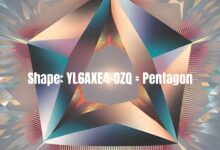Freyja: The Enigmatic Goddess of Love and War

Table of Contents
- Introduction
- Who is Freyja?
- The Powers and Attributes of Freyja
- 3.1 Freyja’s Role in Norse Mythology
- 3.2 Symbols Associated with Freyja
- Freyja’s Relationships and Legends
- 4.1 Freyja and Her Family
- 4.2 Freyja in Norse Literature
- Freyja’s Influence in Modern Culture
- 5.1 Freyja in Literature and Art
- 5.2 Freyja in Popular Media
- Conclusion
1. Introduction
Freyja, one of the most celebrated deities in Norse mythology, embodies a fascinating blend of attributes that span love, war, fertility, and beauty. As a goddess revered by both men and women, she captures the imagination of many with her multifaceted personality and rich lore. This article delves deep into the world of Freyja, exploring her powers, relationships, and cultural significance.
2. Who is Freyja?
Freyja, whose name translates to “Lady” in Old Norse, is a goddess associated with love, beauty, and fertility. She is part of the Vanir, a group of gods linked to nature, prosperity, and fertility, as opposed to the Aesir, who are more focused on order and warfare. Freyja is often depicted as a stunningly beautiful woman adorned with fine jewelry and a feathered cloak that allows her to fly. Her complexity as a character allows her to serve multiple roles within the pantheon, making her a captivating figure in Norse mythology.
3. The Powers and Attributes of Freyja
3.1 Freyja’s Role in Norse Mythology
Freyja’s role is multifaceted. She is not only the goddess of love and beauty but also the warrior goddess who claims half of the souls of those who die in battle. This duality illustrates her importance in both the domestic sphere and the battlefield, symbolizing the intricate balance between love and conflict.
Freyja is associated with the practice of seidr, a form of magic related to prophecy and divination. This connection to magic enhances her status as a powerful and respected deity, feared and revered by gods and mortals alike.
3.2 Symbols Associated with Freyja
Several symbols are closely linked to Freyja, enhancing her status and significance in the mythological narrative.
- Brisingamen: This exquisite necklace, crafted by dwarves, symbolizes her beauty and the power of love. It is said to glow with a divine light, representing the allure and magnetism that Freyja embodies.
- Cats: Freyja is often associated with cats, particularly the domestic cat, which symbolizes independence and grace. In Norse culture, cats were considered sacred, and Freyja’s connection to them reflects her role as a goddess of fertility and domesticity.
- Chariot: Freyja is depicted riding a chariot pulled by two cats. This imagery emphasizes her dual role as a goddess of both love and war, showcasing her ability to traverse both realms effortlessly.
4. Freyja’s Relationships and Legends
4.1 Freyja and Her Family
Freyja’s family is equally intriguing. She is the daughter of Njord, the sea god, and her brother is Freyr, the god of fertility and prosperity. The bond between Freyja and Freyr highlights the interconnectedness of the Vanir and their attributes, illustrating how love, fertility, and prosperity are intertwined in Norse beliefs.
Freyja is also known for her romantic escapades. One of the most famous tales involves her pursuit of the giant Thrym, who steals her beloved necklace, Brisingamen. This story not only showcases her desire but also her cunning and ability to navigate complex situations.
4.2 Freyja in Norse Literature
Freyja appears in various sources of Norse literature, including the Poetic Edda and the Prose Edda. In these texts, her adventures and relationships are detailed, providing insight into her character. One particularly notable tale involves her role in the death of the hero Baldr, where her tears are said to turn into gold, symbolizing the intertwining of love and sorrow.
5. Freyja’s Influence in Modern Culture
5.1 Freyja in Literature and Art
Freyja’s legacy extends beyond ancient texts, permeating modern literature and art. Many contemporary authors draw inspiration from her character, exploring themes of femininity, power, and duality. In visual arts, Freyja is often depicted as a strong, beautiful figure, embodying the complexities of womanhood.
Her representation in various artistic forms highlights the enduring fascination with her character, illustrating how she serves as a symbol of empowerment and strength in contemporary society.
5.2 Freyja in Popular Media
In recent years, Freyja has made appearances in popular media, including video games, television series, and films. Her character often embodies the same traits celebrated in ancient texts: beauty, strength, and a fierce independence. These modern adaptations showcase Freyja’s relevance in today’s culture, serving as a reminder of the enduring power of myth.
6. Conclusion
Freyja is not just a goddess of love and war; she represents the complexities of human emotion and experience. Her stories reflect the interplay between love and conflict, beauty and power, making her a timeless figure in mythology. As we explore her character, we uncover the rich tapestry of Norse beliefs and the ways they continue to influence modern culture. Freyja’s legacy is a testament to the enduring nature of myths, where the ancient and the contemporary seamlessly intertwine.
you may also read choicegazette.





